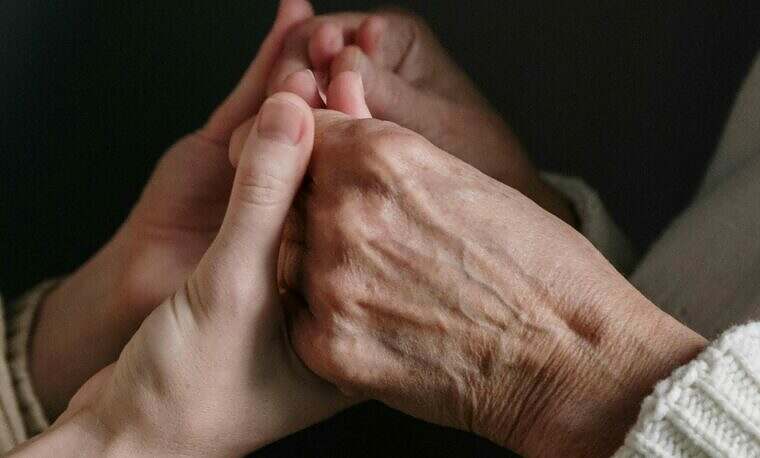Professor David Veale, a consultant psychiatrist at Nightingale Hospital, recently spoke about emetophobia – the extreme fear of vomiting or seeing others throw up – in a new article for Stylist Magazine.
Professor Veale is an internationally leading expert on emetophobia. Although a lack of research and understanding surrounds the phobia, it is surprisingly common and thought to be experienced in women up to four times as men.
What is emetophobia?
Emetophobia is an extreme fear of vomiting, seeing vomit, watching other people vomit, or even feeling sick. It is a type of anxiety disorder that can occur alongside other mental health conditions such as obsessive compulsive disorder (OCD).
The causes of emetophobia can be triggered by a traumatic episode of sickness, or simply without a cause. Having a family history of anxiety disorders or phobias can increase a sufferer’s risk of developing the condition.
As journalist Lauren Geall explains: “Vomit. Throw up. Chunder. No matter what you call it, nobody really likes being sick. It’s one of those unpleasant things that we all (reluctantly) have to deal with – like having to wait for a delayed train or taking a cold shower when the boiler breaks.
However, for people who live with emetophobia – an extreme fear of vomiting or seeing others throw up – being sick isn’t just an unpleasant event: it’s their worst nightmare.”
Why is it more common in women?
“Not enough is known at present about the gender differences in emetophobia,” admits Professor David Veale, consultant psychiatrist at the Nightingale Hospital and author of Free Yourself From Emetophobia: A CBT Self-Help Guide For A Fear Of Vomiting.
“There is some evidence to suggest that women may be more prone to the feeling of disgust,” he explains. “For example, men are more likely than women to regard vomiting as something funny (for example, it’s ‘better out than in’ after a heavy bout of drinking) rather than ‘revolting’.”
He continues: “Women are also more likely to develop contamination fears related to obsessive compulsive disorder (OCD), but this gender split is not as big a difference as in emetophobia.”
You can read the full article here.
Where does emetophobia come from?
It is still unclear what exactly causes a person to develop emetophobia. We need more research to develop better treatments. However, what we do know is that there may be several factors that cause emetophobia. Often it is a mixture of factors as opposed to one single reason or event that leads someone to fear to vomit.
These can include:
- Early life experiences, for example, difficult experiences with vomiting
- Factors in a person’s environment, for example, critical and unsupportive parents when vomiting occurs
- Personality or psychological traits, i.e., if someone is more prone to anxiety
- Biological or genetic factors
We also know that it is never a person’s fault, and they are never to blame for suffering from emetophobia. We have no control over our genes or the traits we’re born with that affect the way we think and feel.
Why does emetophobia disproportionately impact women?
At least 90% of emetophobics are women, and it may be helpful to think about why this is. Differences in the way women report anxieties might explain why more women are found to suffer from emetophobia. Men may be more ashamed to admit fears of vomiting, and therefore their phobia could go undetected. Differences in sex hormones and genetics may also make women more vulnerable to developing emetophobia compared to men. Not enough is known at present about gender differences in emetophobia. However, the gender split is still much higher than occurs in other specific phobias.
There may be a genetic influence that makes women more vulnerable to developing emetophobia. There is some evidence to suggest that women may be more prone to the feeling of disgust. Men are more likely than women to regard vomiting as something funny (for example, it’s “better out than in” after a heavy bout of drinking) rather than ‘revolting’. Women are generally more hygienic than men, and more likely to develop contamination fears related to obsessive compulsive disorder (OCD). However, this gender split is also not as big a difference as in emetophobia.
What treatments are available for emetophobia?
Cognitive behavioural therapy – or CBT – is a ‘talking and doing’ therapy that aims to reduce psychological distress by working with people’s thoughts and actions. The way someone feels about vomiting may be down to the associations that they have made with the action in the past.
CBT for emetophobia, therefore, involves helping to test out your expectations and learn to tolerate your distress. This means facing up to your fears.
Research has shown that CBT is an effective treatment for emetophobia. In emetophobia, people usually believe those body sensations are a sign that vomiting is about to happen, that they will lose control and that vomiting will be totally hideous. People with emetophobia often want to know for certain that they will not vomit. Such thinking styles are associated with extreme anxiety, safety-seeking behaviours, and avoidance. CBT aims to help reverse these patterns of thinking and behaving.
Prof David Veale, our Lead consultant for OCD and related disorders, joined Tuppence Middleton on The BBC One Show to discuss managing OCD and the latest advancements in using virtual reality to treat emetophobia.
Watch the full conversation now on BBC iPlayer – link here.
Professor Veale has also co-written a self-help book on emetophobia, called ‘Free Yourself from Emetophobia: A CBT Self-Help Guide for a Fear of Vomiting’. It is based on a protocol for treating emetophobia in a controlled trial and has therefore demonstrated effectiveness.
Related Conditions
Treatment approaches
Relevant specialists
-

Professor David Veale
Lead consultant for OCD and related disorders at Nightingale Hospital
People stories
-

OCD unit testimonials








